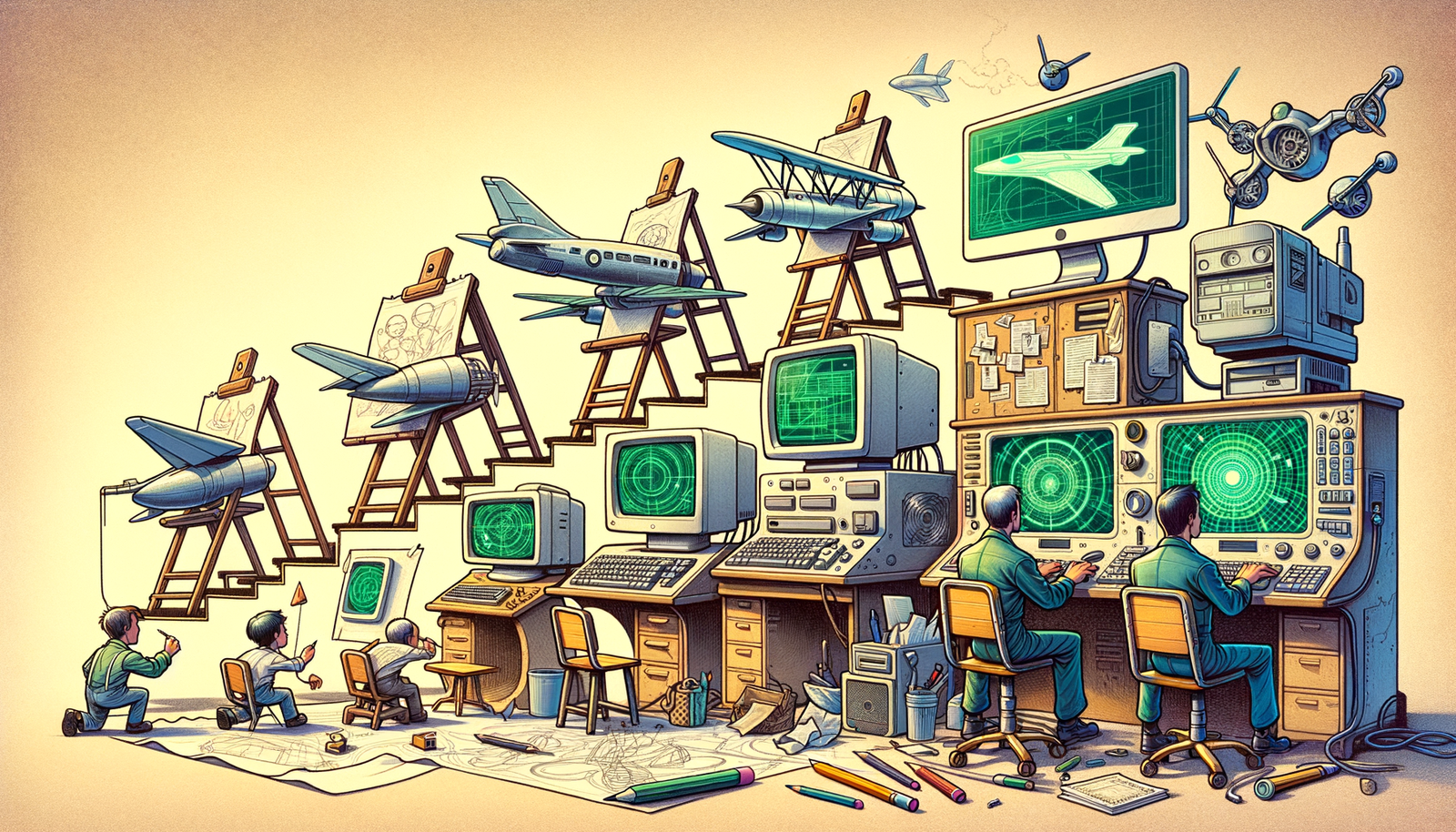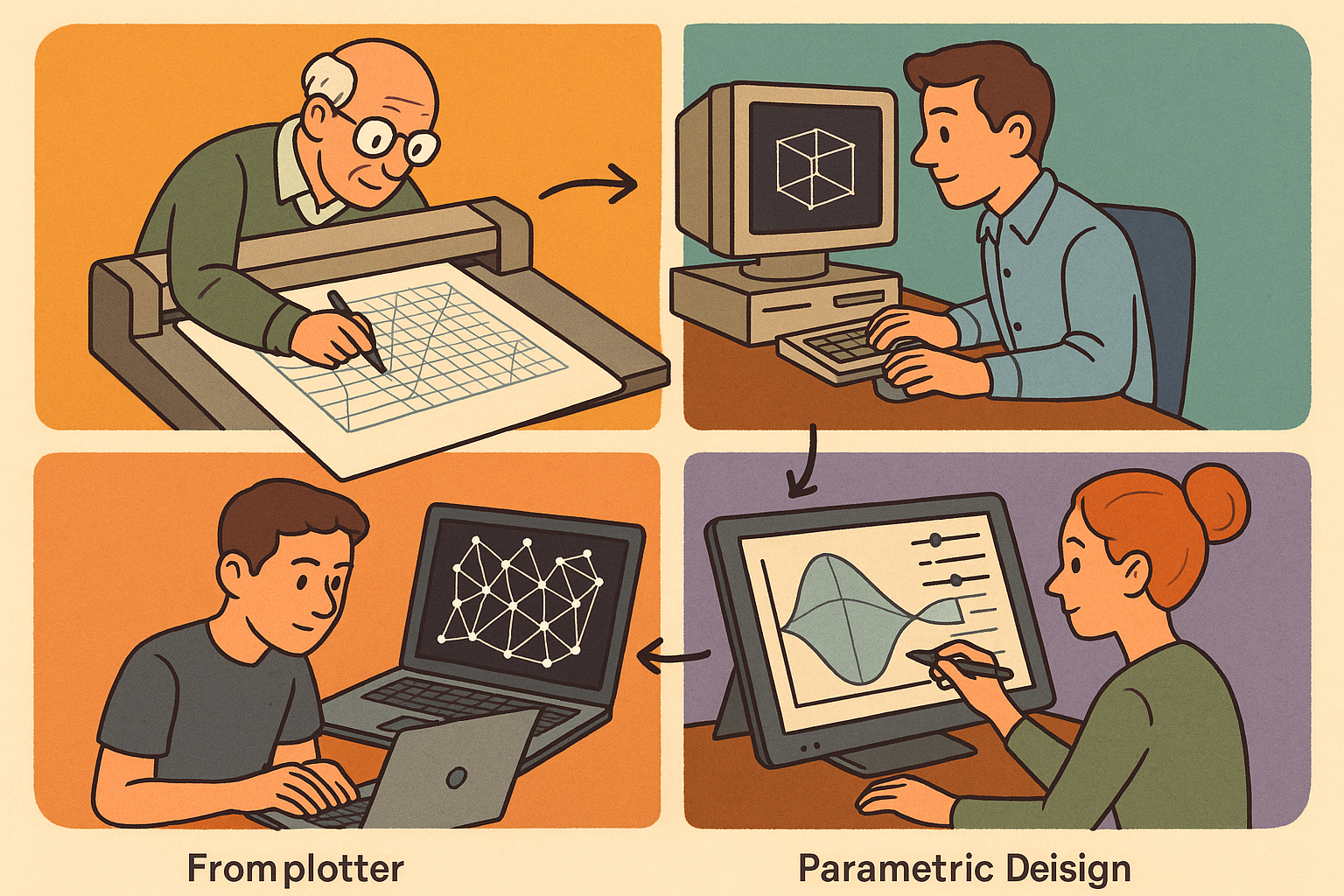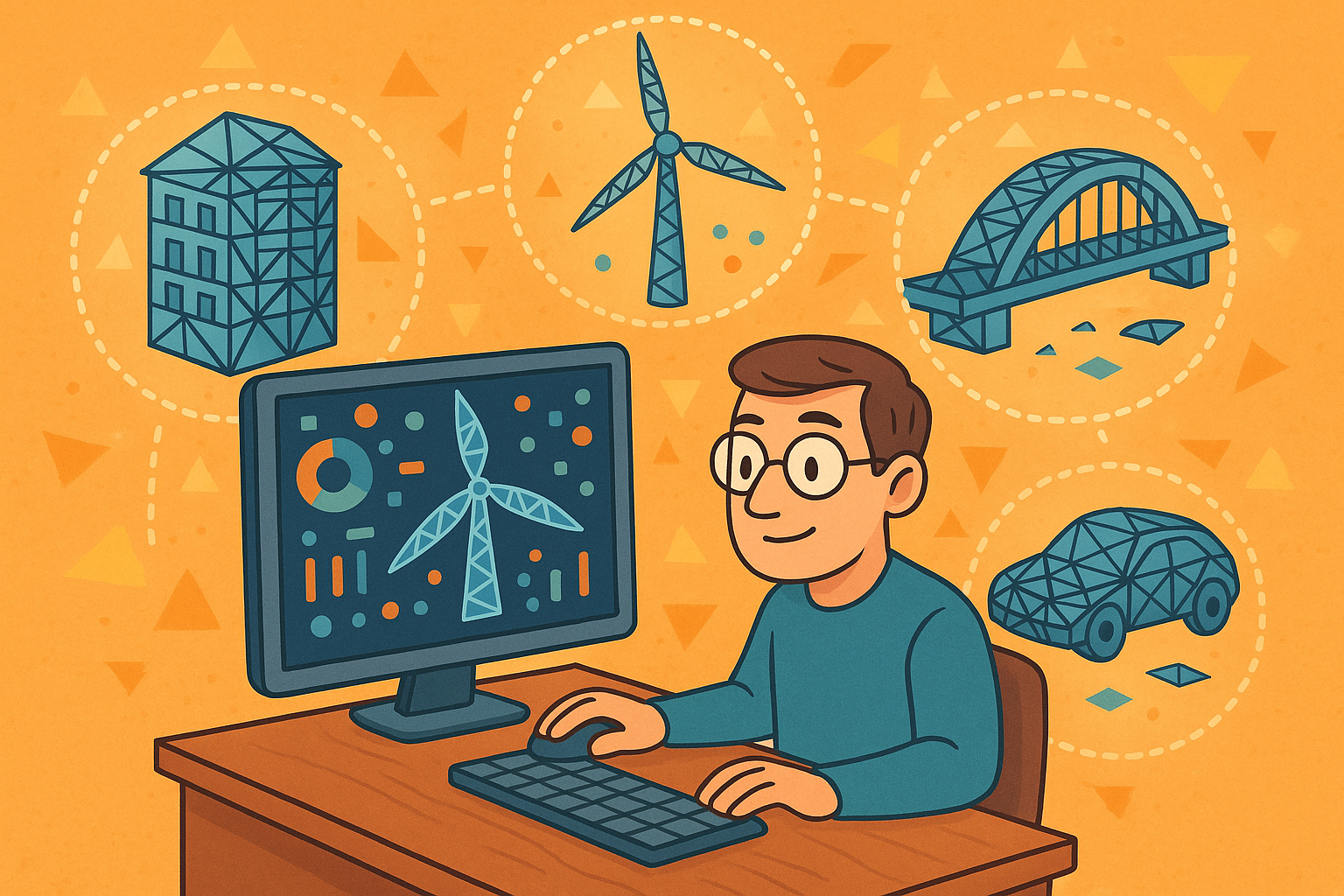Your Cart is Empty
Customer Testimonials
-
"Great customer service. The folks at Novedge were super helpful in navigating a somewhat complicated order including software upgrades and serial numbers in various stages of inactivity. They were friendly and helpful throughout the process.."
Ruben Ruckmark
"Quick & very helpful. We have been using Novedge for years and are very happy with their quick service when we need to make a purchase and excellent support resolving any issues."
Will Woodson
"Scott is the best. He reminds me about subscriptions dates, guides me in the correct direction for updates. He always responds promptly to me. He is literally the reason I continue to work with Novedge and will do so in the future."
Edward Mchugh
"Calvin Lok is “the man”. After my purchase of Sketchup 2021, he called me and provided step-by-step instructions to ease me through difficulties I was having with the setup of my new software."
Mike Borzage
Design Software History: Evolution of Aerospace Design Software: From Blueprints to AI and Cloud-Based Solutions
August 29, 2024 5 min read


History of Aerospace Design Software
Introduction to Aerospace Design Software
The aerospace industry has always been at the forefront of technological innovation, and the evolution of design software within this sector is a testament to that fact. From the early days of manually drawn blueprints to the sophisticated computer-aided design (CAD) and simulation tools we see today, aerospace design software has undergone significant transformations. These advancements have revolutionized the way we design, test, and manufacture aerospace components and systems.
Several key milestones have marked the trajectory of aerospace design software development. The initial adoption of CAD tools in the 1960s and 1970s paved the way for more complex and accurate designs. The introduction of Non-Uniform Rational B-Splines (NURBS) and Bézier curves allowed for the modeling of intricate surfaces, providing designers with the ability to create more aerodynamic and efficient aircraft. Over the decades, software tools like CATIA, ANSYS, and Siemens NX have become industry standards, each contributing to different aspects of the aerospace design process.
Early Pioneers and Foundational Technologies
Key Figures and Companies
The evolution of aerospace design software can be traced back to several pioneering individuals and companies. IBM and Dassault Systèmes played crucial roles in the early development of CAD software. IBM's contribution to mainframe computing provided the computational power needed for early CAD applications, while Dassault Systèmes' introduction of CATIA (Computer Aided Three-dimensional Interactive Application) revolutionized the design process.
Companies such as Boeing and NASA were instrumental in adopting and advancing these technologies. Boeing's implementation of 3D CAD software in the design of their aircraft set a new standard in the industry. NASA, on the other hand, utilized these tools for the design and simulation of spacecraft, significantly improving the accuracy and reliability of their missions.
Foundational Technologies
Early CAD software provided the foundation for modern aerospace design tools. Initially used for simple 2D drafting, these programs quickly evolved to support complex 3D modeling. The introduction of NURBS and Bézier curves was a game-changer, allowing designers to create smooth, continuous surfaces essential for aerodynamics.
NURBS (Non-Uniform Rational B-Splines) and Bézier curves enabled the precise modeling of complex aerospace surfaces. These mathematical models allowed for the creation of intricate shapes and forms, which were previously impossible to achieve with conventional drafting methods. The ability to represent complex geometries accurately led to more efficient and aerodynamic designs, ultimately improving the performance of aerospace components.
Evolution of Specific Software Tools
CATIA
CATIA, developed by Dassault Systèmes, has been a cornerstone of aerospace design software since its inception. Initially launched in the late 1970s, CATIA quickly gained popularity due to its robust 3D modeling capabilities. It was one of the first software tools to integrate the entire design and manufacturing process, allowing for seamless collaboration between different teams.
One of the most notable applications of CATIA was in the design of the Boeing 777. Boeing adopted CATIA to create a fully digital mock-up of the aircraft, which significantly reduced the need for physical prototypes. This digital approach not only sped up the development process but also improved accuracy and reduced costs. Today, CATIA remains a vital tool in the aerospace industry, continuously evolving to incorporate new technologies and capabilities.
ANSYS and Simulation Software
Simulation software has become an integral part of aerospace design, and ANSYS is one of the leading tools in this domain. ANSYS offers a comprehensive suite of simulation tools that allow engineers to test and validate aerospace components under various conditions. These tools are essential for ensuring the safety and reliability of aircraft and spacecraft.
ANSYS has been used extensively for aerodynamic and thermal analysis. By simulating airflow and heat transfer, engineers can optimize the design of aircraft components to improve performance and efficiency. The ability to simulate real-world conditions in a virtual environment reduces the need for costly physical testing and accelerates the development process.
Siemens NX
Siemens NX, formerly known as Unigraphics, is another critical tool in the aerospace design toolkit. Siemens NX offers an integrated solution for product design, engineering, and manufacturing, making it an ideal choice for complex aerospace projects. Its extensive capabilities include 3D modeling, simulation, and lifecycle management.
One of the key advantages of Siemens NX is its ability to support collaborative design processes. With teams often spread across different locations, the ability to work on a shared digital platform is crucial. Siemens NX facilitates real-time collaboration, allowing engineers and designers to work together seamlessly, regardless of their physical location. This collaborative approach enhances productivity and ensures that all team members are on the same page throughout the project lifecycle.
Modern Trends and Future Directions
Additive Manufacturing
Additive manufacturing, commonly known as 3D printing, has emerged as a revolutionary technology in aerospace design. Design software plays a crucial role in this domain by enabling the creation of complex geometries that are difficult or impossible to achieve with traditional manufacturing methods. Additive manufacturing allows for the production of lightweight, high-strength components, which are essential for aerospace applications.
Several aerospace components have already benefited from additive manufacturing. These include engine parts, airframe structures, and even entire spacecraft components. The ability to produce parts on-demand reduces lead times and costs, making additive manufacturing an attractive option for the aerospace industry.
Cloud-Based Solutions and Collaboration
The rise of cloud-based CAD solutions, such as Fusion 360, has transformed the way aerospace design teams collaborate. Cloud-based platforms offer several advantages, including real-time data access, seamless collaboration, and reduced hardware requirements. These solutions enable teams to work together from anywhere in the world, enhancing productivity and innovation.
Real-time data and collaborative workspaces are becoming increasingly important in modern aerospace projects. With the complexity of today's aerospace systems, effective collaboration is essential to ensure that all team members have access to the latest information and can contribute to the design process. Cloud-based solutions facilitate this by providing a centralized platform for data sharing and communication.
AI and Generative Design
Artificial Intelligence (AI) and generative design are poised to revolutionize aerospace design. AI-driven design tools leverage machine learning algorithms to optimize aerospace components for performance, weight, and cost. Generative design, in particular, allows engineers to input design parameters and constraints, and the software generates multiple design alternatives that meet the specified criteria.
Future directions in aerospace design will likely involve even greater integration of AI and generative design. These technologies have the potential to unlock new levels of innovation and efficiency, enabling the creation of highly optimized and advanced aerospace systems. As AI continues to evolve, its applications in aerospace design will expand, leading to breakthroughs that were previously unimaginable.
In conclusion, the history of aerospace design software is a fascinating journey of innovation and technological advancement. From the early pioneers to the latest trends in AI and cloud-based solutions, design software has played a pivotal role in shaping the aerospace industry. As we look to the future, it is clear that these tools will continue to drive progress and enable the creation of the next generation of aerospace systems.
Also in Design News

Design Software History: From Plotters to Procedural Intent: A Technical History of Generative and Parametric Design Software
January 04, 2026 13 min read
Read More
Semantic Meshes: Enabling Analytics-Ready Geometry for Digital Twins
January 04, 2026 12 min read
Read MoreSubscribe
Sign up to get the latest on sales, new releases and more …



